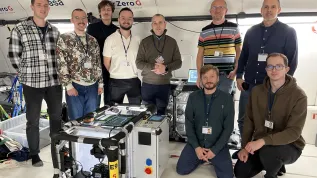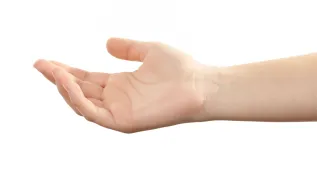
An AI-based diagnostic system designed to support radiologists in analysing CT and MRI scans has been developed at the AGH University of Science and Technology (AGH UST) in Kraków.
According to project leader Professor Zbisław Tabor from the Department of Biocybernetics and Biomedical Engineering at AGH UST, the system — based on artificial intelligence algorithms — has been tested for nearly six months at the University Hospital in Kraków.
Its purpose is to assist physicians in reading medical images, minimise the risk of missing pathological changes, and accelerate the diagnostic process.
The technology forms the core of the Raygenic Rayspad system, an advanced diagnostic viewer with AI-powered computer support. During the pilot programme, doctors analysed nearly 100 MRI and CT scans.
The AI performed automatic segmentation, lesion detection, and precise measurements, which were then compared with human analyses.
“Our goal was to create a tool that would be of real support to doctors in their day-to-day work,” said Prof. Tabor. “Due to the integration of modern AI methods with clinical knowledge, we can provide radiologists with better working conditions and a system that makes the diagnostic process much quicker and more precise.”
The system’s core functionality lies in its embedded AI algorithms, which automatically segment organs, detect anomalies, and measure lesions with high precision.
Professor Rafał Obuchowicz, a radiologist at the University Hospital who participated in the testing, said the system proved useful in detecting pathological changes. “This is like having an additional, extremely observant assistant that analyses each image and does not miss a thing,” he said. “The implementation of a fully functioning system will surely require more engineering work; however, in a near perspective, such solutions may be a substantial support for us, doctors.”
One of the system’s main advantages, according to its creators, is its independence from hardware and location.
Built as a cloud-based platform, it enables doctors to review imaging results from different facilities and devices without synchronising data manually. The interface ensures consistent presentation of images, reducing the risk of errors caused by variations between systems.
The AGH team plans further development of the platform, including the expansion of diagnostic functions. “We are convinced that human cooperation with technology is the future of medicine,” said Professor Joanna Jaworek-Korjakowska, Director of the AGH Centre of Excellence in Artificial Intelligence. “Our tool shows that science can directly help doctors, effectively, safely, and with an actual impact on patients’ health.”
The research is being carried out by an interdisciplinary team led by Prof. Tabor, an expert in medical image analysis; Prof. Jaworek-Korjakowska, who specialises in artificial intelligence; and Professor Bartosz Zieliński from the Jagiellonian University, an expert in explainable AI. (PAP)
PAP - Science in Poland
rgr/ agt/
tr. RL













